Edith Kiertzner Heath (Edith Heath was born on May 24, 1911 – December 27, 2005) was an American studio potter and founder of Heath Ceramics in Sausalito, California. Edith Heath is well known for her avant-garde, minimalist mid-century modern ceramic tableware, including “Heathware,” and architectural tiles. Heath was a pioneer in advancing the evolution of clay and glazes.
Edith Kiertzner Heath (May 24, 1911 – December 27, 2005) was an American studio potter and the founder of Heath Ceramics. She was born in New York City and died in Los Angeles. Formed in 1948 in Sausalito, California, the firm is most known for its mid-century modern ceramic dinnerware, such as “Heathware,” and architectural tiles. The company is still in operation there today, after being founded in 1948.
Where Did Edith Heath Live?
Edith Heath died at her home in Tiburon, California, on December 27, 2005.
Who Owns Heath Ceramics?
Heath Ceramics’ proprietors, Catherine Bailey, and Robin Petravic.
Where Are Heath Ceramics Made?
With two manufacturing facilities: the original dinnerware plant in Sausalito (constructed in 1959) and a tile factory in the Heath Building in San Francisco (opened in 2012), Heath manufactures a variety of products.
What Are Heath Ceramics Made Of?
The clay, which is formed by runoff from the adjacent Sierra Mountains in Sacramento, is transported to Heath, where it is blended with water, kneaded and fired, and then molded.
Are Heath Ceramics Handmade?
Ceramics are made in a human-scale factory, blending hand and machine. Maintaining the human touch in the manufacturing process is important to Heath Ceramics.
Edith Heath Career
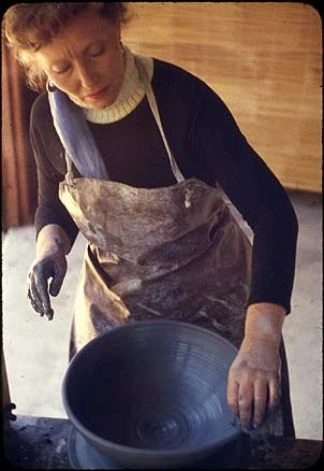
Kiertzner’s parents, Danish immigrants Niels and Karoline Kiertzner, welcomed him into the world on May 24, 1911, in Ida Grove, Iowa, forty miles east of Sioux City, Iowa. Upon graduating from the Chicago Normal School, which was later renamed Chicago Teachers College, Kiertzner went on to work as a teacher in the Chicago area. In contrast to many other young women of her generation and background who did not even complete high school.
Mrs. Heath was the youngest of seven children born to Danish farmers in Iowa, and she spent her early years helping to raise her siblings, baking bread, and doing household chores. Friends and coworkers noted that the Depression only strengthened her sense of resourcefulness and independence, attributes that would come to define her artistic vision.
Edith Heath After Graduation
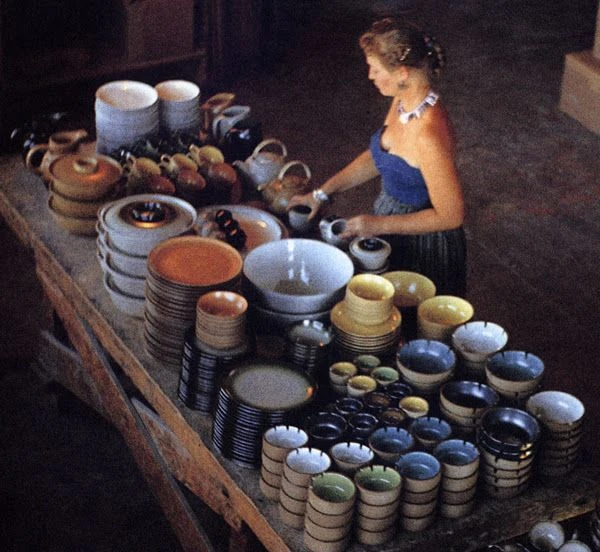
After graduation, she participated in a part-time ceramics program at the Art Institute of Chicago, where she took her first ceramics course. Edith Heath was married to Brian Heath in 1938.
In 1941, she met the man who would become her husband at a children’s camp, and they were married three months later. After her husband was offered a position with the Red Cross in this city, the couple relocated to San Francisco. Through an invitation to work at a Federal Art Project training school, Heath became acquainted with the ideas of major artists, including Bauhaus designer László Moholy-Nagy, who became a friend of his. Additionally, it was via this program that she met her future husband, Brian Heath.
Edith Heath In San Francisco
Once settled in San Francisco, Edith got work as an art teacher at the Presidio Hill School while also taking lessons at the California School of Fine Arts.
Ceramicist Edith Heath first foray into ceramics occurred while she was a student at the San Francisco Art Institute. Mrs. Heath successfully petitioned the University of California, Berkeley’s extension department to offer a yearlong ceramic chemistry course, motivated by a desire to better grasp the science of clay and glazes.
Mrs. Heath was able to practice her newfound craft after her husband, an engineer and inventor, converted the old treadle-powered sewing machine into a potter’s wheel and later installed a gas-fired kiln in the basement below their Filbert Street apartment. She experimented with endless glaze formulations as a result of her husband’s efforts.
During these lessons, she produced a clay body, which she then modified numerous times for use in her production work. Because she did not have as much access to the pottery equipment as she would have liked, Edith followed her ceramic hobbies on her own, transforming a treadle sewing machine into a pottery wheel. The University of California extension courses offered her the opportunity to study eutectics with Willard Kahn in 1943.
Heather’s ongoing experiments led to her becoming an expert (recognized for her significant creative forces) in the way different clay types altered the aesthetic features of her crafts, which she passed on to others. The combination of Heath’s mastery of clay and glaze, as well as her contemporary instincts for proportion and form, established her as a master ceramist.
Her first notable performance took place in the California Palace of the Legion of Honor in 1944. She also competed in the Syracuse Ceramic Nationals in Syracuse, New York.
The editor was approached by a buyer from the San Francisco retailer Gumps who wanted her to provide their store with her high-quality hand-thrown pottery, which she would create in the company’s pottery studio.
The chance was accepted, and she continued to create in her studio while doing so. Major stores began to place orders for her tableware, and she established Heath Ceramics in Sausalito, California, in 1948. By 1949, Heath was putting out 100,000 pieces of jewelry each year.
In 2003, Robin Petravic and Catherine Bailey acquired Heath Ceramics from their previous owners. Her death occurred on December 27, 2005, at her home in Tiburon, California. She was 91 years old.
KCET, California’s public television station, produced a biographical documentary about Edith Heath’s life and work in 2019. The documentary, Heath Ceramics: The Making of a California Classic, was broadcast in 2019. Director Chris Metzler and producer Quinn Costello created a film that investigated the life and influence of Edith Heath, as well as her continuing legacy at Heath Ceramics today.
It was recognized at the 2019 National Arts and Entertainment Awards, where it received first-place honors in the category of Documentary or Special Program Feature over 30 minutes, thanks to the efforts of the Los Angeles Press Club.
Edith Heath Style

Mrs. Heath was a pivotal figure in the development of twentieth-century American design by making unusual ceramic dinnerware and architectural tiles that were otherwise unavailable on the market at the time. She is well renowned for her avant-garde, minimalist glazes, and clay bodies, which she creates from her own formulae and decorates with an avant-garde, minimalist aesthetic.

Coupe Pottery Line by Edith Heath
In spite of the fact that the “Coupe” line by Edith Heath has been in continuous production since 1948, the glaze texture and color have changed from time to time. Some of the other Heath pottery lines include “Rim,” which was created in 1960, and “Plaza,” which was created in the 1980s.
Her designs were an instant hit, resulting in a surge in postwar demand for Heath tableware, which attracted the attention of Frank Lloyd Wright, who used Heath dinnerware in several of his projects after World War II.
Edith Heath Gold Medal
She was the first non-architect to be awarded a Gold Medal by the American Institute of Architects for her architectural tiles, which she created. Members of the architecture world reacted positively to her work, notably Edgar Kaufmann Jr., curator of industrial design at the Museum of Modern Art, who put her work in the museum’s permanent collection.
Aside from expanding her knowledge of ceramic chemistry and attempting to make her own clays from locally sourced clay pits, Mrs. Heath created glazes that allow the speckle pattern of the clay body to shine through, which has become an iconic element in the artist’s body of work.
Her husband died in 2001, and she has no children. Besides her sister and a number of nieces and nephews, Mrs. Heath is survived by a brother.
Edith Heath Legacy
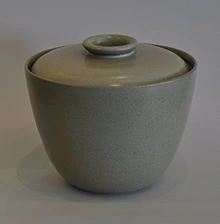
A number of notable projects, like the exteriors of the Norton Simon Museum and the Yerba Buena Center in San Francisco, were specified by top architects such as Eero Saarinen, Alexander Girard, William Pereira, and the firm Skidmore Owings & Merrill, among others.
The architectural tiles were utilized in the design of the Pasadena Art Museum, now known as the Norton Simon Museum, in Pasadena, California, which was created by Pasadena architects Thornton Ladd and John Kelsey of the firm ‘Ladd + Kelsey’.
Her art was featured in a show at the Legion of Honor museum in San Francisco, which aided in the development of her commercial success.
A total of 115,000 glazed tiles, in varied brown tones with an undulating surface, are used to cover the exterior of the unusual and modern curvilinear outer facade, which was designed and built by Edith Heath. They are a part of the scenery that many people see when they watch the New Year’s Day Rose Parade.
Customers included Gump’s, a long-standing San Francisco business, as well as Neiman Marcus, Marshall Field’s, and Bullock’s, and the company secured a nationwide distribution arrangement as a result. Her work was soon recognized by her peers and design professionals, and she was promoted as a result.
She has shown her work at the de Young Museum in San Francisco, the Los Angeles County Museum of Art, CA, Environmental Design Archives at UC Berkeley, the Walker Art Center in Minneapolis, and the San Francisco Museum of Modern Art, among other venues, and has received prizes from each of these institutions.
Were Can I Buy Edith Heath Bowls?
Here are my top 3 online sites where you can purchase Edith Heath bowls, plates and ceramics.

Edith Heath Dinnerware Sets can be found here this is her official website
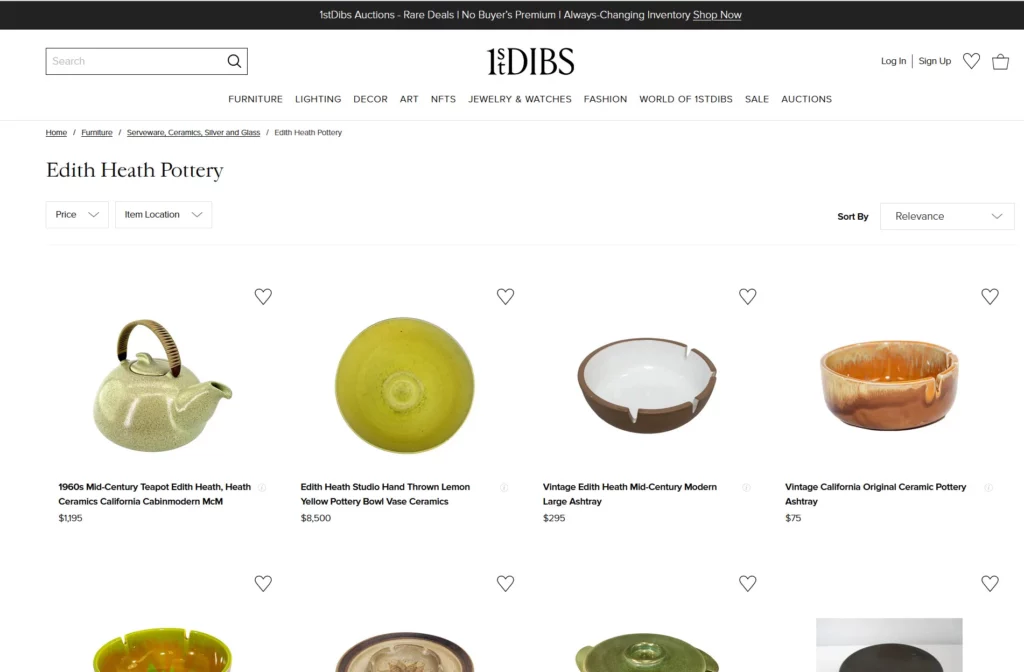
Also Edith Heath pottery can be found here which is an online shop for many things and so happens to have her products
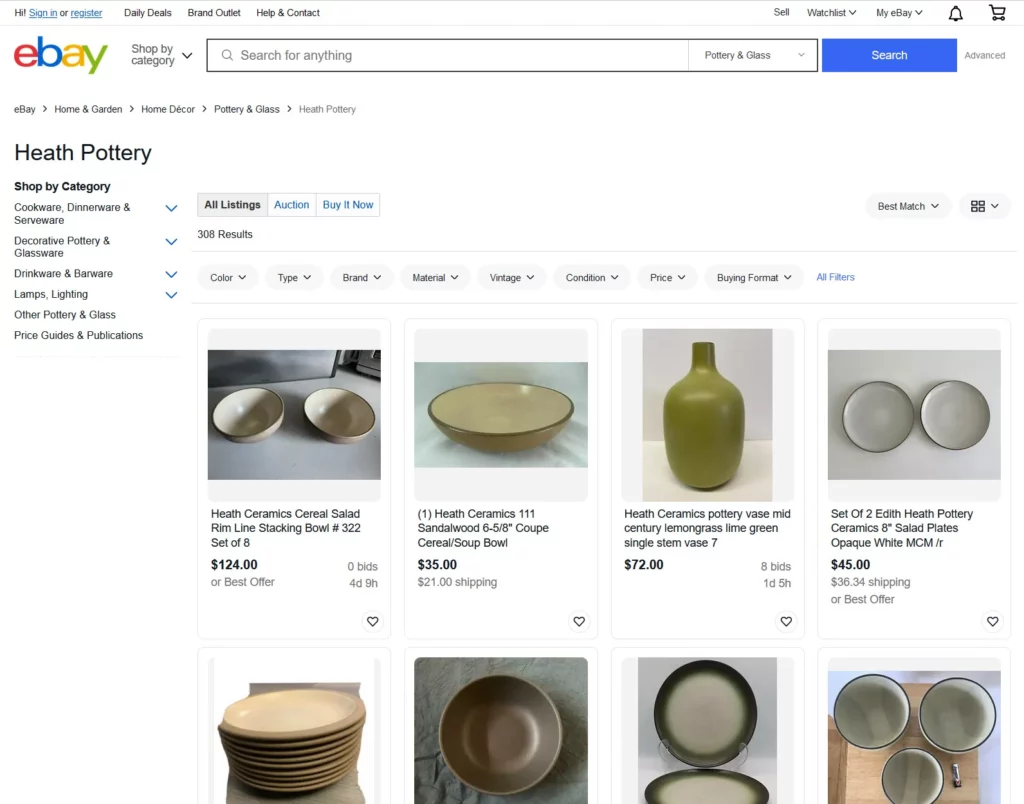
And don’t forget to shop ebay they always have a good selection of bowls and pottery, link is here
Well there you have it. I hope that was helpful!!!
Definitions
Philosophical Foundation – Relating or devoted to the study of the fundamental nature of knowledge, reality, and existence.
Popular Ceramic Artists
Images courtesy of Pinterest = Edith Heath





